Blogs
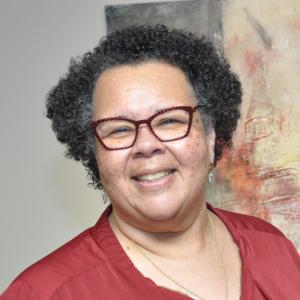
What happens at the Wabash Center is not meant to stay at Wabash. This is not a statement about confidentiality nor about alleged indiscretions. By design, the unambiguous gift of the Wabash Center to faculty colleagues in religion and theology remains conversations to support the life of teaching. Our workshops, colloquies, digital salons, and consultations create conversations to open new, and reinvigorate old, dimensions of teaching. It is our hope that the gleanings, learnings, new perspectives, reaffirmed approaches, needed information, refreshing analyses, renewed skills, modeled competencies, newly introduced notions, and the sheer fun of gathering together in hospitality and camaraderie will be implemented into classrooms as well as reinvested into faculty ecologies. What happens at Wabash is meant to be shared, taught, imparted, imitated and made public. As such, we hope our most recent workshop will be mined for distribution and circulation. The workshop was “Breaking the Academic Mold: Liberating the Powerful, Personal Voice Inside You.” It is a new collaboration with the Collegeville Institute. The online cohort gathered to learn the practices of creative non-fiction writing. We were led by Sophfronia Scott, Director of the Masters of Fine Arts Program, Alma College and Michael N. McGregor, Collegeville Institute faculty. A complete description of the workshop is on our website. The premise of the workshop is that learning to write in creative genres will improve teaching. The depth and critical importance of our conversation was revealed in the kinds of questions we raised and explored. Here are examples of our wonderings: What if developing your writing voice simultaneously assisted with developing the teaching voice? What if learning to operate in your power as a writer impacted your teaching capacity? What if by learning to claim the agency and power in creative writing you ignite your teaching? What if the skills, competencies, capacities of creative non-fiction writing had direct bearing upon your pedagogical decision making and judgement? What if getting a better handle on the human condition meant writing about it, then teaching about it - or vice versa? What if deeper understanding of religious experience was inherit in learning to write beyond the academic genre of writing? What if the hermeneutical challenge of our teaching can be best met through better story telling? What if developing and improving writing skills is a way to better communication and organization skills often lacked in the classroom? What if learning to write so that readers are emotionally moved would improve the ways we design courses or teach a session? What if freeing your imagination for writing contributed to freeing your imagination in teaching? What if the narrow and humdrum restrictions of academic writing was maintained as much by scholar’s self-policing as by the guild’s rigid expectations? What if writing was a tool to narrate yourself into new life as a teacher? What if the power and ability of voice could be unlocked by learning creative writing? What if moving people into new understandings and new grapplings with old ideas, meant harnessing the power and ability to write creatively? What if strengthening the voice for personal expression resulted in more authentic scholarship? What if through creative non-fiction writing our ideas were made more accessible to a wider audience who are asking similar questions as our students and colleagues about religion and theology? During the 6-day workshop we were afforded the luxury of large chunks of time to write into these questions, or to write about anything else we desired. It was a joy. These provocative, permission giving, and counter-cultural questions permeated our workshop and shaped our conversation in generative ways. Questions bubbled and were engaged in daily plenary discussions. The two workshop leaders made themselves available for one-on-one sessions where these questions were answered in private and focused on the personal. These questions surfaced in the sessions where we workshopped one another’s writings. Three times during the workshop each participant read aloud his or her original writing. One of the sessions was dedicated to the entire group providing constructive feedback to each writer while the writer listened to the critique (There are no tears during workshopping sessions!). Hearing from generous and care-filled colleagues about new writing was an act of trust and vulnerability. Providing feedback to colleagues during their writing process was a genuine act of confidence and collaboration. The mutuality, solidarity, and shared wisdom gave me a renewed sense of creativity and hope. I am able to provide a first-hand account from inside the workshop because I was a participant. It was my privilege to learn and grow alongside my peers. As Wabash Center Director, I want to continue to actively learn about teaching. Even at this advanced stage in my career, I want to learn more about teaching and the teaching life. I want to learn to write better, more accessibly, and with a more authentic voice. I have no doubt that by improving my teaching and my writing I will clarify my vision for the Center and lead us to a more generative future. After the workshop, I returned to my desk with this quote resonating in my spirit. It captures my experience in the workshop as well as provides me with clarity as we move into our future. Ralph Marston wrote: “Go often to where you have the indisputable knowing that life is good. Do, again and again, those things that affirm your highest hopes and best instincts … Touch, taste, feel, see, hear what compels you to care. Let life be good in ways that drive you to make it even better.” Thank you Sophfronia Scott and Mike McGregor. Thank you, Collegeville Institute. I hope our collaboration grows. A special thanks to my fellow writers and workshop participants for this adventure!
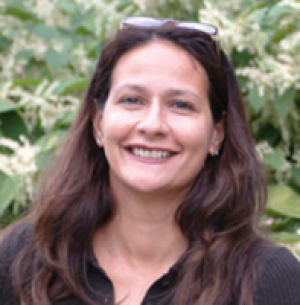
Sufia Uddin Associate Professor Connecticut College No better time to teach how Islam is “raced” than now. Comments by the likes of Donald Trump provide excellent fodder for discussions about race, religion, and racism. It is also true that the kinds of questions asked by journalists and the stories they
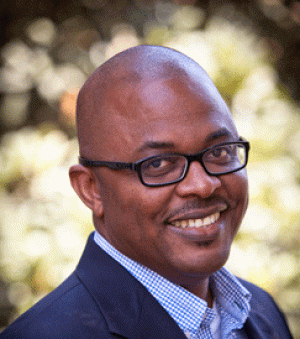
Steed V. Davidson Associate Professor of Old Testament Pacific Lutheran Theological Seminary and Church Divinity School of the Pacific Each night I watch Jeopardy. Occasionally I am thrilled when Tobago or Trinidad features in a clue. This thrill comes from knowing that the island where I grew up (area of 116 square miles) has found its way into the knowledge required of Jeopardy contestants. I take this small thrill, and I am painfully aware of how small it is, because for most of my life I have been told that the intellectual knowledge that matters consists of material outside of..
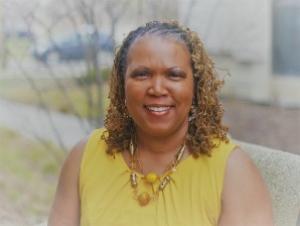
I like questions. Interrogatives entice me. Answers are low-hanging fruit. Social media lends towards making everyone an expert, and experts tend to have all of the answers. However, questions can change the course of a conversations. Inquiries make space for new ideas, new practices, new programs, and new ways of being. As a biblical scholar questions from this text appeal to me. God asks Cain, “Where is your brother Abel? (Genesis 4.9)” The Lord inquires of Ezekiel, “Can these bones live? (Ezekiel 37:3)” Jesus quizzes the crowd, “Who touched me? (Luke 8:45)” Each question respectively provides a lesson on communal accountability, national atonement, and social acceptance. Questions can change the course of a conversation. Questions allow one to pivot an approach to pedagogy. Before I begin class, I often ask my students, “How are you? How’s it going?” There is no rush to exegesis, cultural studies, biblical interpretation, or any path to hermeneutics. I frequently start our sessions checking in and making space just to sit, hear, and be. It is challenging to process words and thoughts of people distant from us when we are wrestling with trauma and pain close to home. Since March these moments have taken on more meaning. It is one thing to pause not knowing what is unraveling in another person’s life. It is quite another to stop when what stumps you, also stumps me. To begin class unaware of any individual difficulty presents one type of challenge. However, when there is a communal, national, global vicissitude that is no respecter of persons, the classroom becomes a place where traditional pedagogical hierarchy is impudent and irrelevant. Yes, there is the professor, and of course, there are students. Yet, an invisible pathogen called COVID-19 has compromised all displays of visible power. In our current context asking, “How are you?” takes on new meaning. As I ask my students about their well-being, it gives me the space to ask myself, “How am I doing?” Such fragile moments thrust professors to center stage of navigating self-care and classroom-care. In this pandemic when each day there is a startling increase in cases, a rising death toll, and still little progress towards a vaccine, pedagogy and pastoring have become strange bedfellows. Such times call for professors to tap into emotional reserves while discerning portals of spiritual connection. Our tasks before reading essays, facilitating conversations, or sharing our slides via Zoom, require that we don ecclesial attire, access priestly garb, and step into the role of professor-pastor-priest-rabbi-iman-cleric-shaman-spiritual sage. I am not belittling these much-needed roles by suggesting they are easily or readily adaptable. These professions require much credentialing and processes. As an ordained National Baptist and Disciples of Christ minister, I know this from experience. I must admit that prior to this COVID-19 crisis, I kept “Rev.” out of the classroom so “Dr.” would carry the day. Today is a new day. Both must enter fully in light of this global disease and dis-ease. Now I ask new questions before we dive into the gospels, epistles, Jesus, or the mother of James and John. Here are the inquiries from which my pedagogy now proceeds: What gives you joy? Social media and health reports make it the default to dwell on the negative. To seek joy in a death-dealing context is fodder for educational reform. Our coronavirus-context focuses on the pessimistic. The classroom should be the place for cultivating the positive even when its opposite seems overwhelming. As a professor, I want my pedagogy to challenge the norm, even as we live during abnormal times. What worries you? We do not teach in a socio-political or socio-economic vacuum. Students had worries and angst pre-COVID-19. But now, families, finances, challenges to faith, physical wellness, and friendships have all undergone some shifting. Our students’, and our, anxieties about these and other matters are more pronounced. While wrestling with this pandemic, students remain curious about finishing the semester. I wish . . . Okay so these last two are not questions, but they seek information nonetheless. Fill in the blank queries offer a way for students to express how they feel. To engage in wishful thinking provides a forum for helping us see that things won’t be like this always. A pedagogical pivot to wishing helps us ponder and put into place what we project for the future. I am grateful for . . . When the gravitas of sheltering in place can weigh heavily on all of us, finding something for which to be grateful is paramount. This should not be an exercise in comparison or competition, but an act of contemplative practice in chaos. This is a practice of thanksgiving in the center of turmoil. Questions can change the course of a conversation. Questions allow us to pivot our approach to pedagogy. Questions help us pray through until we get through. *Original blog published April 23, 2020
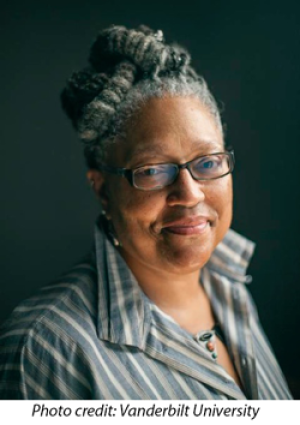
emilie m. townes Dean and E. Rhodes and Leona B. Carpenter Professor of Womanist Ethics and Society Vanderbilt Divinity School The opening paragraph of the Vanderbilt University Statement of Commitments: The Divinity School is committed to the faith that brought the church into being, and it believes that one comes more authentically to grasp that faith by a critical and open examination of the Hebraic and Christian traditions. It understands this faith to have import for the common life of men and women in the world. Thus the school is committed to assisting its community in achieving a critical and.
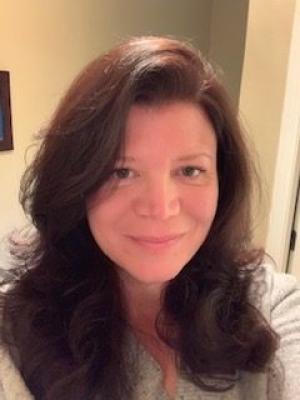
Who or what is God? Words can only say so much about who God is or what God isn’t. Thankfully our thinking isn’t limited to words. Through Art Theology -- using the creative languages of the arts -- we can form new ideas, questions, and perceptions about God. Let the words go and think in color. Thinking back to the very first ideas of God you ever had, what color comes to mind? Gray... Gray was the color of the beard of the old man in the sky, the first image I had of God the Father. Gray was the color of the clouds he sat on. In painting this first idea, I used cold, dark, black grays illustrating the vast remoteness of this idea of God. I began incorporating yellows and whites and softening places within the gray, creating warmth in the painting. As I did so I recalled my childhood struggle to comprehend how this cold, dark, mysterious God also made me and loved me unconditionally. [caption id="attachment_247214" align="alignnone" width="467"] The Cloud of Unknowing Angela L. Hummel 11x14 Acrylic on Wood[/caption] My concept of God changed when I was introduced to the idea of Jesus and the idea of God’s personal love. The gray remains but softens even more and I introduce an abstract brown line. God’s love expressed through Jesus felt so intimate and personal that I have at times a sense of knowing the nook of his neck, of having rested my head upon that shoulder line. Yet, I could not tell you what his eyes or nose look like. In some ways I do not know him at all. In other ways, that personal love of God is the most real thing in my experience. [caption id="attachment_247215" align="alignnone" width="390"] Personal Love Angela L. Hummel 11x14 Acrylic on Wood[/caption] Stepping back and looking at the first two paintings I felt a new question arising. I was physically uncomfortable as I reflected on how masculinely gendered my ideas of God had been. No matter what we think and understand theologically about God language, we carry these memories in our bodies. I felt myself reaching for new colors and lines: purples, blues, gold, and undulating lines. This next painting incorporates my reflections on Shekinah. Both women and men are made in the image of God. The divine feminine reveals a love that conceives, gestates, labors, births, nurtures, and sustains. [caption id="attachment_247216" align="alignnone" width="467"] Shekinah Angela L. Hummel 11x14 Acrylic on Wood[/caption] God is love. This love is mysterious, personal, intimate, boundaried, male, female, non-binary, fluid like water, beyond our comprehension. How can we reflect the love of God and learn to love in this dynamic way? Regardless of bodily function, all of us can learn to love more deeply by reflecting on how love conceives, gestates, labors, births, and sustains. The Christian focus on moral theology has led to judgmentalism that has caused some people to reject religion. Why don’t we devote as much attention to Christian love -- what this love is and how we live it? We need new ways of exploring this vast idea. We need Art Theology. Art Theology has helped me to move away from a monologic pedagogy into a dialogic way of teaching. When my students paint the colors and lines of their thinking about God they move into new ideas, questions, and dialogue that discursive reasoning alone could not take us into. The understandings that we have arrived at through this method have transformed my classroom into a dynamic place of collaboration where together we have learned to see God as truly other, for who God is, not constrained by our previous limited definitions and arguments. Angela L. Hummel
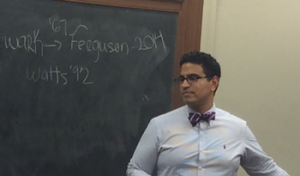
Elias Ortega-Aponte, Ph.D. Assistant Professor of Afro-Latinos/a Religions and Cultural Studies Drew University As I geared up to teach two social justice themed courses this Fall, my summer preparations were disrupted by the news of two tragedies and the reflections they prompted. First was the death of Omar Abrego, beaten to death by police on August 2 in Los Angeles. Witness reports claim that Abrego was taken out of his car and beaten up by two police officers for at least 10 minutes, and left in a pool of blood. The father of three would die hours later in a
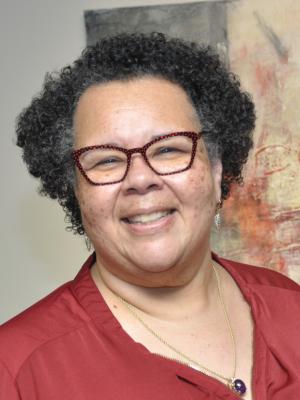
Before the quarantine caused seismic interruptions, a cloistered education was deemed by many as the better education. This longstanding approach to education meant that the student would sequester from the world, study undisturbed from the goings-on of the world, to then emerge and return to the world as a learned person. The time away from society, family, and many kinds of communal obligations was meant to provide time for intellectual maturation, contemplation, and some say, an extended adolescence. The students would be free to read, write, and think while under the watchful eye of a teacher. In the cloistered model of education, the degree taken (wrestled and snatched) afforded the recipient a select spot in the ranks of the higher echelons of society. The focus of education as secluded and separate from society is evident in the language of students. Students talk about the classroom as being “in here” while their lives are “out there.” Students, in rebuffing some ideas, comment “that won’t work in the real world” or “that’s nice to discuss, but in the real-world people will not go for that.” The classroom, for these students, is not the real, while life in society, in community, with family obligations and responsibilities is the real. Students also signal that what is taught in many classrooms has little relevance to the problems and pain of their people. Or what they learn requires a great deal of translation, interpretation, and adaptation to be relevant to the suffering of their people. The primary aim of cloistered teaching is to insulate student and teacher until which time that the student has met the disconnected standards of the faculty. In this time of shifting models of education, these kinds of new questions abound: Suppose the aim of education is not to hide from the world in order to emerge as an educated person, but instead the better aim is to prepare to meet the needs of the world as education? Could this moment be forcing us to a collective realization that the better aim of education is to engage in the world as education and thus change the world? What is the relationship between communities of learning and social change? What is the influence of the world upon classroom teaching? Moving forward, what will be the relationship between communities of learning and the world? What will be the relationship between schools and the very neighborhoods, towns, and cities they occupy? What if the world is the classroom? What practices of communities of learning are needed for social innovation? What meaning-making practices, understandings and joys of the world are needed to facilitate vibrant learning in schools? Yes, many schools have forms of internships, field education, supervised vocational experiences, elaborate field trips, or study abroad while in a degree program. Most of these programs are auxiliary to the degree program and if not auxiliary the experiences which keep students in the world or send students into new worlds are not the spine of the curriculum. The primary presumption of current models of higher education is that student’s first learn theory in a classroom (cloistered), then are sent out into the workplace to practice. There is still a separation and privileging of theory over practice. Howard Thurman informed us years ago that theory and practice are each sides of the same coin. What would it mean to create approaches to education which do not separate theory from practice or student from community? A small start to answering this critical question has to do with the mindset of the students while in a degree program. The identities and social locations of my students has always been a significant factor in my teaching. I wanted my students to come to class and bring with them into the course conversation the joys, suffering, trouble, practices, learnings and know-hows of their people, their communities. I believed that students, to have agency in their own learning, must not leave their families nor society for education, but they must reflect critically and imaginatively on the struggles of their community looking for new and needed solutions. To facilitate this approach, I designed this learning exercise for my introductory course: During the second session of the course, I asked students to reflect upon these questions: (a) Who are your people? (b) What sacrifices did your people make for you to be in this educational experience? (c) What problems plague your people? What problems have their backs against the wall? Once these questions were engaged, I would instruct them to draw a metaphor or simile to depict your people and their current social situation. I chided them not to reduce the complexity of the situation, but to use a metaphor which depicted the complexity. I gave them time to think and draw. Finally, I asked these questions for further reflection and preparation for our semester long conversation: (a) What kind of leader will you need to become to assist your people and relieve their suffering? (b) What leaders will you join for the thriving of your people? Using their drawings and prose we created a gallery wall in the classroom. I encouraged them to, for the entirety of the semester, keep their families, churches, neighborhoods at the center of their experience in this degree program. Throughout the course I insisted that they not think generically nor individualistically as if they were at school alone or disconnected from the world. Throughout the semester I led them in other learning activities and assignments where they had to continue to consider the specific problems, troubles, challenges, and attributes of their people and ways our study informed those troubles and fostered their leadership formation in their own context. We do not have the luxury of disconnecting our best minds from the troubles and support of their families and neighborhoods while undertaking higher education. We need models of education which nurture interconnection, understands community and promotes a sense of belonging as a necessity to healthy society.
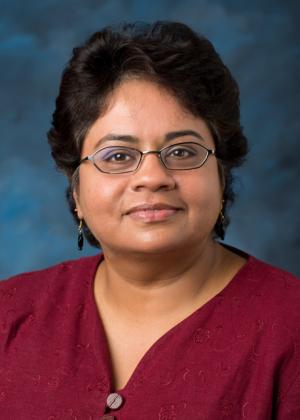
Driftwood on a beach. How did it get here? From where? When? Why this beach? Why this day? And also, that it arrived, on the foam, with a bounty of neon green moss, stubbornly shining a light in the soggy sand. A beacon. Life will out. Blog originally posted in April 2018

As religious and theological educators, one way to encourage democratic formation among our students is to teach about democracy, especially about the historical relationship between religious institutions and democracy. Another way is to provide opportunities for students to practice democracy. In other words, we might consider how our classrooms and assignments can provide opportunities for students to engage in democratic practices. Both seem important to democratic formation among students. In the United States, one way to describe a civic association, religious institutions having historically been the largest share, is a school of democracy. While this Tocquevillian view has its critics, social scientists claim that participating in civic associations can cultivate a set of civic beliefs, dispositions, and practices that will contribute to a robust civic life. For example, participation in civic associations can generate citizens’ ability to care for one another, care about public issues, and learn how to deliberate about these public issues. They are also thought to generate what Robert Putnam calls “social capital,” which is created when citizens learn the norms of reciprocity, build networks, and build trust. Social capital is needed for citizens to come together to work on common projects, build broader cross-group networks, and join together to hold elected officials accountable. What makes something—an institution, organization, workplace, classroom, or community—democratic? I recently discussed this question with a student as she prepared to facilitate the week’s discussion of Jeffrey Stout’s Blessed are the Organized. As we discussed the text, she compared two organizations she has worked for. Transparency and shared decision-making were features that she felt made her current organization more democratic than the other. Practices of shared authority, shared responsibility, transparency, and accountability are all part of what organizing people democratically looks like. Providing students with examples and theory helps them evaluate the organizations and institutions that they are currently a part of or help lead. It can also cultivate their moral imaginations as they envision reforms or their broader vocation. Further, teaching students about the civic and democratic practices of religious institutions is fundamental to cultivating a moral imagination. Churches played a significant role in the grassroots organizing of the Civil Rights Movement, for example. Our students should not only study the moral reasoning that motivated this civic work but also the organizing practices and the principles that structured these movements. This includes analyzing instances of undemocratic authority and accountability within movements, such as the gendered disparities within certain spheres of the Movement. Contemporary examples are crucial too. C. Melissa Snarr’s All You That Labor is an ethnographic study of the role that religious organizations played within the Living Wage Movement. In addition to being a more contemporary example of broad-based organizing, this study illustrates how religious institutions can help frame the moral language of a public issue. This, too, seems important for helping students develop a moral imagination and prophetic voice. Teaching about democracy, however, is not the only way we can imagine our role as theological and religious studies educators. Rather, our classrooms can also be places where students are able to practice democracy. In my ethnographic study of a public high school in Brooklyn I found several examples and a robust culture of shared authority and shared responsibility among teachers and students. I borrow this way of framing democratic education from Amy Gutman, but it is also deeply related to broader traditions of liberative or critical pedagogies. In my spring course, I incorporated a practice of shared authority and responsibility. Students were divided into small groups of five to six and each was responsible for facilitating the discussion for one week. I met with each student prior to their day of facilitation, and during class I observed. This structure, I believe, is one way to share not only authority with students but also to share responsibility. Students are authorized to share in the responsibility of how the learning unfolds not only with the professor but also with their colleagues. To make these aims more explicit, I asked students to complete a short feedback form after each discussion. One of the questions was: How much more do you feel you understand the content after the discussion? Students could rate on a scale of 1-5 with 1 being “about the same as before” and 5 being “much more than before.” Another question was: How collaborative was the knowledge production and discussion? Students could rate on a scale from 1-5 with 1 being “little to no collaboration” and 5 being “very collaborative.” My goal was to make the aims of the discussion clear: collaborative knowledge production. In this way, I hoped to cultivate a shared responsibility among the group members for understanding, critiquing, and applying the week’s content. While some students incorporated this language and framing into their written feedback, I could have done more to incorporate this as a practice central to the aims of the course. As I reflect on how to revise this practice, I am eager to incorporate other ways to practice shared authority and responsibility within the classroom.
Categories
Write for us
We invite friends and colleagues of the Wabash Center from across North America to contribute periodic blog posts for one of our several blog series.
Contact:
Donald Quist
quistd@wabash.edu
Educational Design Manager, Wabash Center
Most Popular

Are You Okay?
Posted by Nancy Lynne Westfield, Ph.D. on October 1, 2025

On Plagiarism and Feeling Betrayed
Posted by Katherine Turpin on October 27, 2025

Embracing the Imposter Within
Posted by Fred Glennon on September 15, 2025

A Teachable Moment Missed?
Posted by Fred Glennon on October 20, 2025

Analog Versions of Digital Classrooms
Posted by Samantha Miller on October 8, 2025